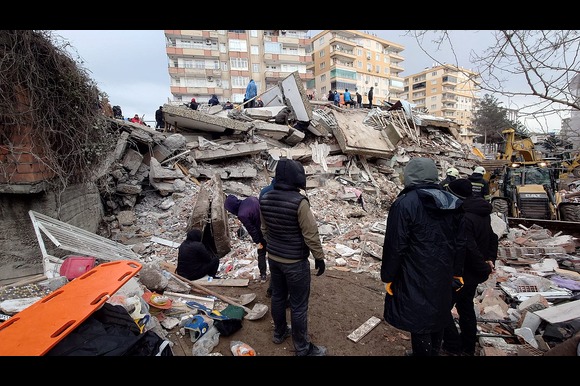Google has acknowledged that its Android Earthquake Alerts (AEA) system failed to accurately notify people during the devastating earthquake that struck Turkey in 2023, killing tens of thousands. Despite the system being live and active on the day of the disaster, it significantly underestimated the strength of the tremors and sent out far fewer critical alerts than expected.
According to new information provided to the BBC, up to 10 million people within 98 miles of the quake’s epicentre could have received Google’s highest-level “Take Action” alert—potentially giving them up to 35 seconds of warning to seek safety. Instead, just 469 such alerts were sent ahead of the initial 7.8 magnitude quake.
Google said that around half a million users received a lower-level “Be Aware” alert, which is intended to notify users of lighter shaking. Unlike “Take Action” alerts, these do not override phone settings such as “Do Not Disturb” and are much less prominent.
At the time of the earthquake, Google had publicly claimed the system “performed well.” However, a BBC investigation later in 2023 revealed that many people affected by the quake reported receiving no meaningful alert. The full extent of the failure has only recently come to light.
Android Earthquake Alerts is designed and operated by Google, not by individual national authorities. It runs on Android devices, which account for more than 70% of mobile phones in Turkey. The system is described by Google as a “global safety net” and is active in nearly 100 countries, often in places where no national warning systems exist.
The February 6, 2023 earthquake and its powerful aftershocks caused catastrophic damage across southeast Turkey. Over 55,000 people were killed and more than 100,000 injured. Many victims were asleep when the quake hit in the early hours of the morning, and experts say a properly functioning alert system might have saved lives.
Despite the AEA being live at the time, Google’s system drastically miscalculated the magnitude of the quake—initially estimating it to be between 4.5 and 4.9 on the moment magnitude scale (MMS), when in reality it was 7.8. This misjudgment meant that only a fraction of the people who should have been alerted were warned.
Later the same day, a second major earthquake struck. This time, Google’s system issued 8,158 “Take Action” alerts and nearly four million “Be Aware” alerts, still well below the potential reach given the scale of the disaster.
Following the event, Google revised the algorithm behind AEA. In a simulation run after the update, the system correctly generated 10 million “Take Action” alerts and 67 million “Be Aware” notifications. The company said each major quake helps them refine the technology.
“Every earthquake early warning system grapples with the same challenge – tuning algorithms for large magnitude events,” a Google spokesperson told the BBC.
However, some experts have raised concerns about the lack of transparency and the delayed acknowledgment of the system’s shortcomings. Elizabeth Reddy, assistant professor at the Colorado School of Mines, said the two-year delay in revealing the extent of the failure was unacceptable.
“I’m really frustrated that it took so long,” she said. “We’re not talking about a little event—people died—and we didn’t see a performance of this warning in the way we would like.”
While Google insists that AEA is designed to supplement, not replace, national early warning systems, some scientists worry that governments may rely too heavily on commercial tech solutions.
“Would some places make the calculation that Google’s doing it, so we don’t have to?” asked Harold Tobin, director of the Pacific Northwest Seismic Network.
Tobin emphasized the need for greater transparency about the system’s performance, warning that misplaced trust in untested systems could have serious consequences.
Google researchers have since published a detailed explanation of what went wrong in the Science journal, attributing the failure to limitations in the system’s detection algorithms.
The BBC has also inquired about how the AEA system performed during a more recent earthquake in Myanmar in 2025, but has not yet received a response from Google.
Despite the controversy, the AEA system remains active in 98 countries. Google maintains that each event improves its accuracy, though critics say those improvements must be matched by greater openness about when the system fails.






